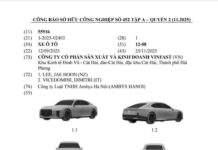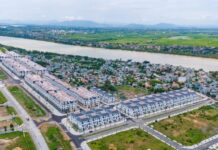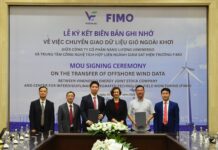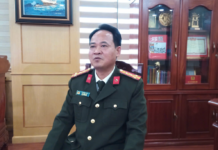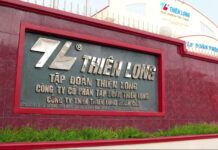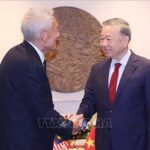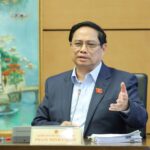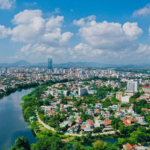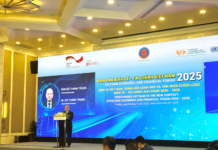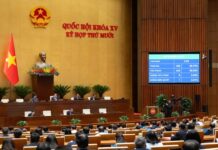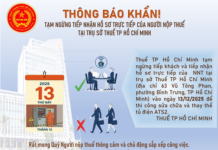On November 20, the National Assembly discussed the proposal to invest in the high-speed rail project on the North-South axis , with the Minister of Transport, Mr. Nguyen Van Thang, providing clarifications and addressing the concerns raised by the National Assembly deputies.
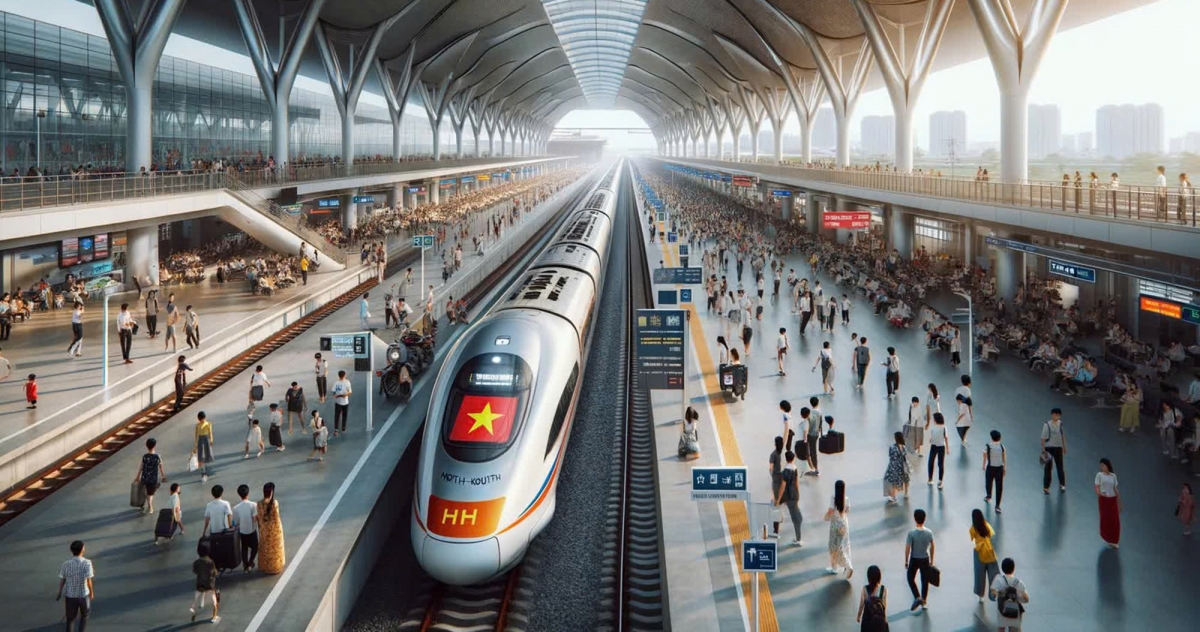
Artist’s impression of a high-speed rail station in Vietnam. AI Image
Prior to this discussion, the proposal for the high-speed rail project received the approval of the Central Executive Committee and was presented to the National Assembly for consideration and approval of the investment proposal during the 8th session.
As per the proposed plan, the North-South high-speed rail project will span approximately 1,541 kilometers in length. The starting point will be in Hanoi (Ngoc Hoi station), and the endpoint will be in Ho Chi Minh City (Thu Thiem station).
In terms of investment scale, the new North-South high-speed rail will feature a double-track design with a standard gauge of 1,435 mm, electrification, a design speed of 350 km/h, and an axle load of 22.5 tons.
The proposed alignment includes 23 passenger stations and 5 freight stations, catering to passenger transportation needs and providing dual-use capabilities for national defense and security, with the option to transport cargo if required.
With a preliminary total investment of over $67 billion, the North-South high-speed rail is the largest transportation infrastructure project in Vietnam to date. The 1,541-kilometer-long project, consisting of 60% bridges, 30% embankments, and 10% tunnels, presents a massive opportunity for Vietnamese construction contractors in terms of the sheer volume of work.
With a focus on utilizing public investment as the primary funding source, the project offers a significant opportunity for Vietnamese businesses while also presenting challenges and demanding stringent requirements in terms of technology, human resources, and legal framework. The deputies shared their perspectives on the workload, opportunities, and difficulties associated with this pivotal project.
An Opportunity for Domestic Contractors to Transform and Grow
Mr. Nguyen Quoc Hiep, Chairman of the Vietnam Contractors Association, emphasized that Vietnam has never undertaken a project of such magnitude and investment value. He viewed this project as a chance for domestic contractors to “transform and grow.”
While the project is not overly complex technologically, it demands meticulous preparation due to its scale and high-speed requirement of 350 km/h. Mr. Hiep described it as a “technological battlefield” where Vietnamese enterprises need to learn and embrace the most advanced knowledge and technologies.
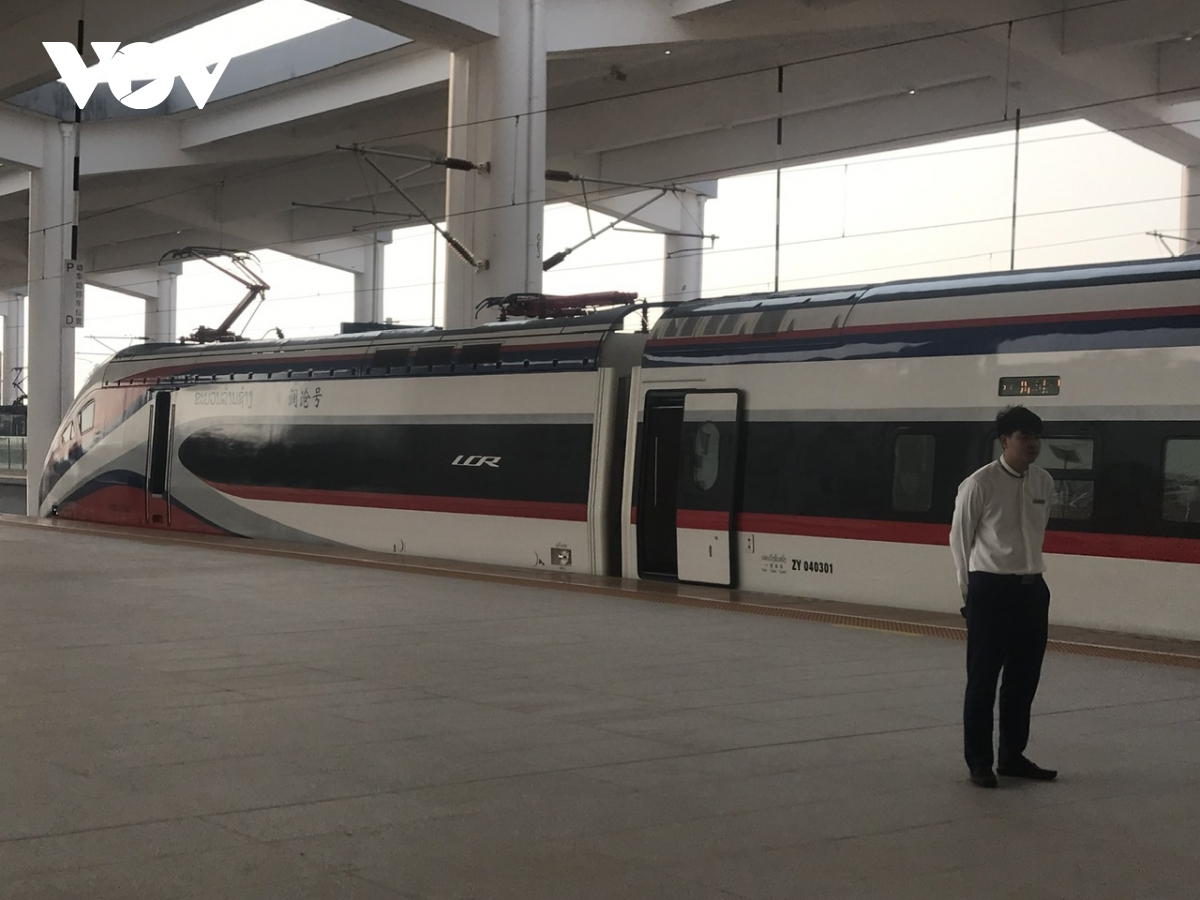
High-speed train in Laos
“With their current capabilities and expertise, Vietnamese businesses are fully capable of undertaking the construction,” affirmed Mr. Hiep. He identified the primary challenge as lying in the availability of skilled human resources and practical experience.
Mr. Nguyen Duc Kien, former head of the Prime Minister’s economic advisory group, commended the transformation of Vietnamese enterprises in the field of construction technology while underscoring the importance of proactive investment and international cooperation.
Mr. Kien pointed out the necessity for Vietnamese businesses to proactively invest and collaborate internationally to stay ahead of the technological curve. He highlighted challenges in various construction aspects of railways, such as power supply systems for locomotives and carriages, and track-laying technology.
Human resources also pose a complex issue. Fortunately, universities have begun updating their curricula and introducing new majors related to high-speed railways, as Mr. Kien noted.
“If they don’t invest and form linkages, Vietnamese businesses risk losing out on their home turf,” he emphasized.
Strategies for Businesses to Embrace the Opportunity
From a business perspective, Mr. Nguyen Quang Huy, CEO of Deo Ca Group, acknowledged the significant opportunities and challenges presented by the high-speed rail project in terms of technology and technical skills. Deo Ca Group has proactively implemented a specific strategy to prepare for their involvement in the project, focusing on specialized human resource training and the development of localized technology solutions.
Regarding human resources, Deo Ca Group has clearly defined skill levels, ranging from engineers to laborers. They have collaborated with training institutions to offer two railway-focused courses for 200 engineers. Simultaneously, they have established practical training centers at construction sites to provide long-term training for the general labor force associated with large-scale projects.
At their current road construction projects, Deo Ca Group has also initiated practical training centers to enhance the skills of laborers, preparing them for the transition to high-speed rail construction. The training curriculum covers occupational safety, environmental hygiene, and advanced field techniques.
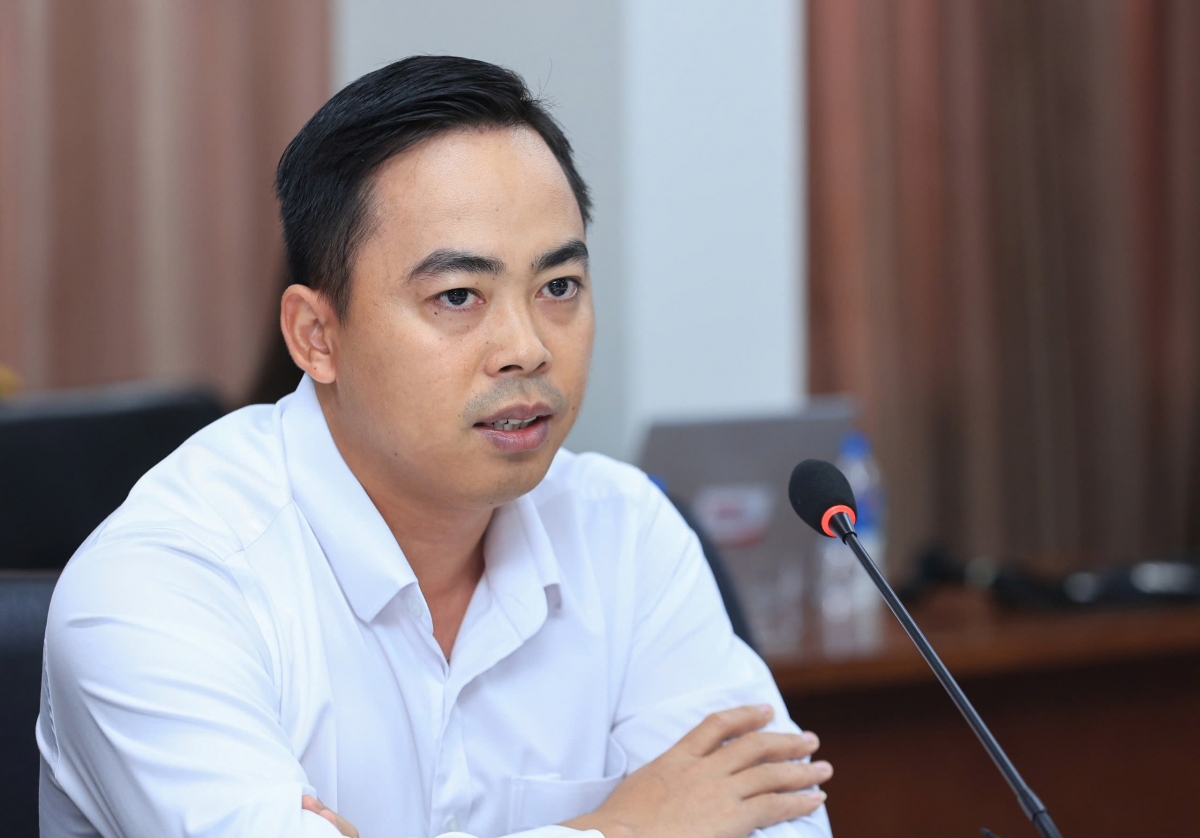
Mr. Nguyen Quang Huy, CEO of Deo Ca Group.
In terms of technology, Deo Ca Group has undertaken study tours to China, Japan, and Europe to observe, research, and invite international partners to collaborate. The group is also actively pursuing digital transformation solutions while aiming to participate in the production of locomotives and carriages to increase localization rates in line with the government’s strategy.
“We have strengths in human and financial resources, and we are exploring experienced and reputable international rail technology companies to collaborate with, aiming to localize production activities to serve the North-South high-speed rail project,” said Mr. Nguyen Quang Huy.
Mr. Van Hong Tuan, Deputy General Director of Cienco4 Group, shared that they are actively preparing their human resources, equipment, and other necessary conditions. However, he candidly acknowledged the limitations they face, particularly the shortage of skilled engineers and technicians.
“We hope that the management agency will create favorable conditions for enterprises to seize this opportunity, thereby enhancing their capabilities and stature,” expressed Mr. Tuan.
The Need for Special Mechanisms, Improved Legal Framework, and National Standards
Addressing the legal framework and technical standards, the CEO of Deo Ca Group mentioned that the North-South high-speed rail project currently has 19 groups of special mechanisms, including many mechanisms applied to the North-South expressway projects. He emphasized the importance of refining the legal framework and issuing national standards to ensure the project’s success.
Mr. Huy suggested reviewing and adjusting the special mechanisms applied in the North-South expressway projects to align with the realities of the high-speed rail project, especially in land clearance and mining permits. This would reduce implementation time and encourage Vietnamese enterprises to confidently invest in technology and human resources.
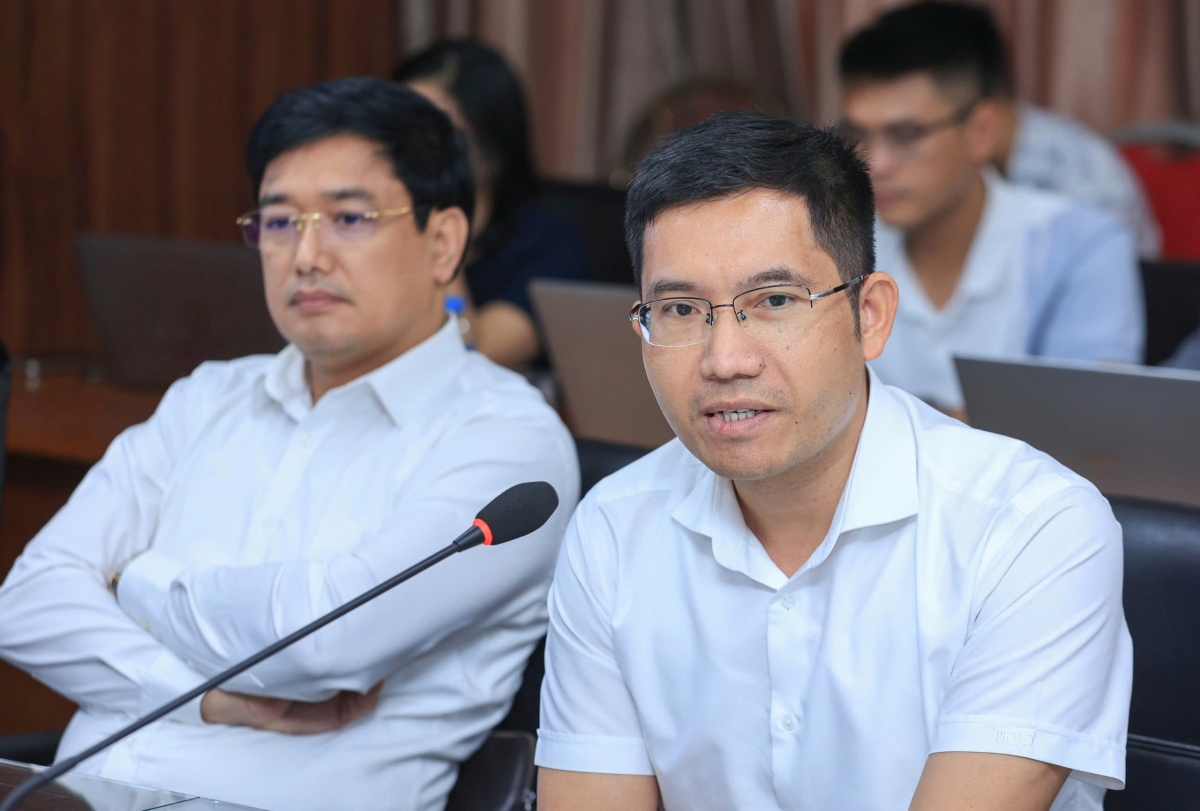
Mr. Van Hong Tuan, Deputy General Director of Cienco4 Group.
For large-scale projects, Mr. Huy proposed prioritizing domestic enterprises with strong governance capabilities, proven track records, and specific products to lead, connect, and provide training to other enterprises. He also recommended giving preference to local enterprises in the project’s vicinity.
“We propose that the implementation be divided into two components: Component 1, including bridges, roads, and tunnels, should be assigned to domestic enterprises through direct appointment, similar to the recent North-South expressway projects. Component 2, including locomotives, carriages, signaling systems, etc., should be assigned to domestic enterprises in collaboration with foreign partners to proactively access new technologies and gradually transfer and master the technology, covering construction, operation, maintenance, and regular maintenance,” explained Mr. Huy.
Colonel Nguyen Tuan Anh, Deputy General Director of Truong Son Construction Corporation, shared his perspective: “The high-speed rail project presents a significant opportunity for Vietnamese enterprises to showcase their capabilities, but it requires unity and strong linkages. A clear legal framework will boost enterprises’ confidence in investing in technology and human resources.”
Vietnamese contractors are presented with a rare opportunity through their involvement in the North-South high-speed rail project—the largest infrastructure project in the country’s history. However, alongside the opportunities lie substantial challenges related to mechanisms, technology, and human resources.
Overcoming these obstacles demands not only self-improvement by individual enterprises but also unity among participating units and supportive policies from managing agencies. This is also an opportunity for Vietnamese enterprises to enhance their capabilities and establish their presence on the international stage.
The North-South high-speed rail project is currently under consideration by the Government, and the National Assembly is reviewing the investment proposal during its 8th session.
As per the proposed plan, the North-South high-speed rail will span approximately 1,541 kilometers, with a starting point in Hanoi (Ngoc Hoi station) and an endpoint in Ho Chi Minh City (Thu Thiem station). The design speed is set at 350 km/h.
The alignment includes 23 proposed passenger stations and 5 freight stations, catering to passenger transportation and providing dual-use capabilities for national defense and security, with the option to transport cargo if required.
A Bird’s Eye View of Hoan Kiem’s Cultural and Historical Landmarks
The seamless blend of traditional and French-inspired architectural masterpieces creates an irresistible allure.
The Rise of Binh Duong: No Longer a Backwater in Economic Development
The southern region of Binh Duong Province is envisioned to become a dynamic, multi-sector economic hub, with a particular focus on trade and services. This strategic shift underscores the province’s commitment to economic diversification and improving the quality of life for its residents. By not solely relying on industrial development in the north, Binh Duong demonstrates its forward-thinking approach to creating a well-rounded and prosperous future for all.
The Power of Policy: How the Right Mechanisms Can Multiply National Strength
In the 8th session, on the morning of November 23rd, the National Assembly delegates discussed the draft Law on State Capital Management and Investment in Enterprises and the draft Law on Digital Technology Industry. Prime Minister Pham Minh Chinh joined the discussions with the 8th group, comprising delegates from the provinces of Vinh Long, Dien Bien, Kon Tum, and the city of Can Tho.
A Province to Merge Two Districts Upon Becoming a Centrally-Governed City
Upon its establishment, the city was envisioned with a plan to comprise nine administrative districts.


